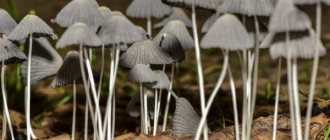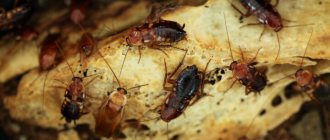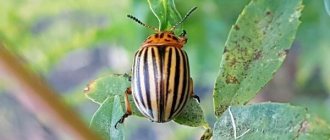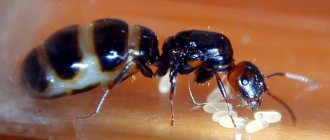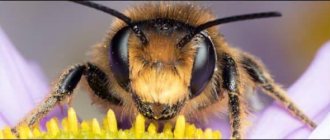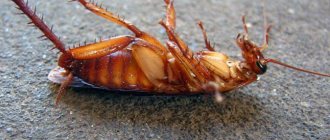Who are parasites?
Parasites are microorganisms of plant or animal origin that belong to the lower class. The name “parasites” comes from the Greek word parasitos (freeloader), reflecting the meaning of the existence of these organisms.
Parasites include worms, helminths, simple and complex viruses, and fungi. They can survive only at the expense of another organism, since their food is the tissues of a living creature or plant. Parasitic individuals can live inside or outside the host’s body.
Almost all types of parasites are dangerous to humans. For example, helminths, in the course of their life activity, release dangerous compounds into the human blood - toxins, which can cause severe poisoning, intoxication, and in exceptional cases even cause blood poisoning (sepsis). If a patient in whose body (mainly in the liver or intestines) worms or helminths have settled does not receive the necessary assistance in a timely manner, death may occur.
Important! Conservative treatment when parasitic individuals are detected in the human body is only possible if their location is the intestine.
If other organs (heart, lungs) are affected, the only way to get rid of parasites is through surgery.
Read more - how to find out if there are parasites in the body.
Heterotrophs appeared after autotrophs
When this world was born, autotrophs appeared first. That is, plants and some simple organisms that created organic substances for themselves. For example, a plant receives water and mineral salts from the earth, creates organic substances from them in the light, grows and reproduces due to them.
Only then did evolution give rise to heterotrophs - organisms that decided not to waste time on producing organic matter, but to eat it in ready-made form.
Although how this transition arose and what the “transitional forms” were from autotrophs to heterotrophs remains a mystery.
Who are saprophytes?
To understand the difference between parasites and saprophytes, it is necessary to define what saprophytes are. These include microorganisms and bacteria, the food for which is the remains of plants and animals. The most popular representative of saprophytes is the dust mite. It can live on any surface (wood, lint, fabrics), and feeds on dust consisting of dead human skin cells.
Most saprophytes do not pose a danger to humans, but there are species that can cause serious illness if they enter organs and tissues. Such saprophytes include, for example, E. coli.
This type of bacteria is often found in decomposing animal carcasses, especially cattle. When E. coli enters the human body, organs become infected, which can result (depending on the location) in pneumonia, meningitis and even sepsis. All these diseases are dangerous for humans with a high risk of mortality, so it is important to monitor hand and skin hygiene and take measures to strengthen the immune system in the autumn and winter.
Important! Despite the fact that saprophytes do not feed on the tissues of living organisms, their food must still be of an organic nature (trees, rotting plants, animal carrion).
This means that chemicals and compounds are not suitable for this type of microorganism.
Can a heterotroph become an autotroph?
No. To become an autotroph, you must have special organelles in your cells, which allow you to independently create organic substances. First of all, these are chloroplasts - “green” organelles that give plant leaves their green color.
If they don't exist, they will never appear. Just as an autotrophic organism will not develop organelles that will make it a heterotroph.
I note, however, that there are organisms that occupy an intermediate position between heterotrophs and autotrophs. They are called mixotrophs. They have chloroplasts and at the same time they can absorb ready-made organic substances.
But there are only a few such creatures.
Saprophytes and parasites - what's the difference?
The main difference between parasites and saprophytes lies in their mode of existence and the nature of their food. If we summarize all the data, we can highlight the following differences between these types of microorganisms:
- Parasites live and feed at the expense of a living organism (“host”); food for saprophytes are dead organic structures.
- Saprophytes rarely harm the human body; Parasites always have a detrimental effect on internal organs and poison the blood and tissues.
- Parasites cannot exist outside of another organism; Saprophytes can use non-living structures as habitats.
Both saprophytes and parasites can cause harm to the human body, so it is important to follow preventive measures and hygiene rules to prevent parasitic infections.
Functions and Features
Saprotrophs differ from parasitic fungi in that they have a different structure. The main part of their body consists of mycelium. It is especially well developed in mold and yeast. During the process of cell division into mycelium, conidia are formed. Their shape is filamentous, spiral, stellate and spherical. The color of such formations is white, milky, gray and brown. They can only be seen with a microscope. The most common saprotrophs are yeasts, cap yeasts and molds.
Mushrooms need a substrate for nutrition, from which they absorb the necessary nutrients with the help of mycelium. The feeding method of saprotrophs is called diffuse-osmotic.
Saprotrophs are fungi that feed on organic compounds that are formed as a result of the process of decomposition of plant and animal remains and animal excrement. They, unlike parasitic fungi, do not live in living organisms and usually do not cause harm to the human body. They are unable to produce organic matter.
These mushrooms are inherently destroyers - decomposers. They are a significant link in the cycle of matter and energy. With their help, the entire vast natural biomass decomposes, eventually turning into soil. And this is very important for the life processes of all life on our planet.
Saprotrophs do not pollute the environment and do not leave solid waste. They form many spores, allowing them to easily spread to any food source (Penicillium, Rhizopus and Mucor). Sometimes saprotrophs cause damage to wooden structures of houses and cause spoilage of food, fruits, seeds, feed and paper.
Edible and inedible species
All saprotrophs are usually divided into suitable and unsuitable for food. Edible species include:
- cobwebs - live mainly in swampy areas;
- lines - grow in mixed and coniferous forests;
- morels - found in mixed forests, on mossy and sandy places, in humus, in fires;
- champignons - live in well-fertilized and moist soil, near livestock farms, and are grown on mushroom farms.
Champignons, which are in great demand, stand out from this group. In terms of nutritional value, they are equal to meat products, but have low calorie content. Champignons grown at home can be eaten even raw. Among the inedible saprotrophs are:
- pig - poisonous, life-threatening (very common);
- toadstool - poisonous, often confused with edible mushrooms.
Sometimes saprotrophic fungi become parasites. This happens when their mycelium gets inside higher plants. These species are usually called saproparasites.
The term parasites is broad and often people understand by them all inhabitants of the plant environment that use organic matter as food. However, saprophytes and parasites differ strikingly in both characteristics and life cycles.
What ways to eliminate these violations are currently available?
Today in domestic medicine this pathology is called dysbiosis or dysbacteriosis, and abroad - the syndrome of impaired bacterial growth in the intestines. But different definitions do not change the essence of the problem - it is always based on qualitative and/or quantitative changes in the composition of the microbiota. And, of course, doctors, having understood the cause of the disease, immediately began to look for ways to treat it.
Around the 60s of the 20th century, the first class of drugs for the correction of dysbiotic conditions was developed - probiotics. They are temporarily deactivated saprophytic microorganisms of the human intestine. Then, in the 80s, the idea of prebiotics arose - a high-quality substrate, the influx of which was supposed to stimulate the restoration of normal microbiota. Finally, at the end of the century, combined drugs (probiotics + prebiotics) called synbiotics appeared.
But, unfortunately, all these means have quite serious drawbacks. We also talked about them in more detail earlier. Here we only need to mention that the vast majority of such disadvantages are due to the fact that either living microorganisms or substances with a non-selective effect are used as medicine.
Tapeworms (cestodes)
The class of cestodes has about 3,500 species - these are parasitic flatworms, which are divided into tapeworms and tapeworms. General characteristics of the class of cestodes and their life cycle in Figure 6 and Figure 7.
Figure 6.
Figure 7.
Individual representatives
Individual representatives of the class are presented in the table:
1) Wide tape
A parasite of the cestode class with a body length from 2 to 9 m, in some cases reaching up to 20 m.
Life cycle and development in the picture:
The negative impact on the human body manifests itself in the form of mechanical damage to the intestinal mucosa and the development of intoxication with waste products of the parasite. Patients may develop anemia and exhaustion, as well as symptoms of enterocolitis.
Diagnosis: detection of eggs in stool.
Prevention: supervision of fisheries, identification and treatment of patients with diphyllobothriasis, refusal to eat raw or poorly cooked fish.
2) Bull tapeworm
The length of the parasite reaches 4-10 m and causes the disease teniarinchiasis. Humans are the final host, and cattle are the intermediate host. The life cycle and description of the parasite are schematically presented in the picture:
Infection occurs when eating half-raw meat. The parasite mechanically irritates the intestinal mucosa and poisons the host's body with waste products. Causes abdominal pain, nausea and intestinal disorders, headaches. A constant feeling of hunger and the need for food can be accompanied by weight loss.
Diagnosis: scraping from perianal skin folds.
Prevention: identification and treatment of patients, veterinarian. supervision of cattle, dignity. supervision of meat products and pastures, refusal to consume half-raw meat products.
3) Pork tapeworm
Another representative of cestodes, reaching a length of 1.2 - 3 m and causes the disease taeniasis, which has a similar clinical picture with taeniarinchiasis, with a more intense manifestation of symptoms. When parasitizing not an adult tapeworm, but its larvae in the body, it causes the disease cysticercosis.
The life cycle and structure of the tapeworm in Figure 8 and Figure 9.
Figure 8.
Figure 9.
The clinical picture of cysticercosis depends on the affected organ - lungs, peritoneum, liver, fatty tissue, muscles, heart, brain and eyes. Most dangerous in cases of brain damage.
Diagnosis: detection of eggs or segments in stool.
Prevention: the same as for teniarynchosis.
4) Dwarf tapeworm
One of the most common helminthic infestations, especially in children. It is much less common in adults. The dimensions of the tapeworm are 10-15 mm. The life cycle and infection are shown schematically in the picture:
Symptoms are associated with intestinal damage and manifest themselves as enteritis with general intoxication.
Diagnosis: detection of eggs in fresh stool. Carry out 3 times with an interval of 10-15 days
Prevention: personal hygiene, deworming in children's institutions, san. supervision of workers in food and child care institutions, identification and registration of patients with hymenolepiasis.
Are metabiotics produced in Russia?
Yes, today they are produced in the form of products for healthy nutrition, and the domestic leader in this area is the Novosibirsk company VILAVI INT LTD. It produces this product under the name "T8 Mobio". And in 2021, this original development of the company’s specialists received a declaration of compliance with the requirements of the Eurasian Economic Union. The active ingredients of T8 Mobio are metafiltrates of all the most important strains of human symbiotic bacteria:
- Bifidobacterium adolescentis;
- Lactobacillus acidophilus;
- Lactobacillus salivarius;
- Lactobacillus helveticus;
- Propionibacterium freudenreichii.
Bifidobacterium adolescentis metafiltrate
The largest number of microorganisms in our body are bifidobacteria. The products of their metabolism included in T8 Mobio are:
- fatty acids that suppress the proliferation of microorganisms that can cause diseases such as shigellosis, salmonellosis, inflammatory staphylococcal lesions, etc.;
- compounds that are required for normal digestion and absorption of food into the intestinal wall;
- vitamin K, as well as B vitamins;
- substances that stimulate the flow of iron, calcium and vitamin D into the blood;
- activators of the mechanical functioning of the intestinal tube, which is necessary for normal digestion.
Metafiltrates of Lactobacillus acidophilus, L. salivarius and L. helveticus
These three types of microorganisms belong to lactobacilli, the main metabolic product of which is lactic acid. In the large intestine, it plays the role of a disinfectant, since many pathogenic species (the same staphylococci or pathogenic E. coli) are highly sensitive to pH levels and simply die under the influence of lactic acid. In addition, the substances included in the lactobacilli metafiltrate in T8 Mobio perform the following functions:
- activate the production of lysozyme, interferons and cytokines, that is, local immune defense;
- participate in a number of metabolic reactions in the intestine;
- have some anesthetic and anti-inflammatory effects, which is important for toxic infections and irritable bowel syndrome;
- promote the regeneration of intestinal epithelial cells.
Finally, the lactobacteria metafiltrate in T8 Mobio provides an influx of lactase, an enzyme necessary for the processing of milk sugar. The deficiency of this enzyme is the main cause of such a common pathology as lactose intolerance.
Propionibacterium freudenreichii metafiltrate
Microorganisms of the genus Propionibacterium serve as the main supplier of some organic acids that are very important for our body. Their metafiltrate in T8 Mobio is rich in:
- Acetic acid. It is a natural precursor to such well-known drugs as, for example, diclofenac or indomethacin, which have antipyretic and anti-inflammatory properties.
- Propionic acid. Getting from the intestines into the blood, and then into the liver, it is converted into ketone bodies, which protect our nervous system during stress, and also provide it with high-quality energy fuel.
- Isovaleric acid. A good psychotonic that can improve our resistance to mental stress. In medicine, it is used as a basis for the manufacture of Valocordin.
- Succinic acid. The most important metabolite of our tissues, necessary for the absorption of oxygen by cells and their production of energy in the tricarboxylic acid cycle.
In addition, the metafiltrate of Propionibacterium freudenreichii in T8 Mobio contains a metabolic product of these bacteria, such as cyanocobalamin. Its second name is vitamin B12, and our body needs an external supply of it, since it cannot synthesize it itself. And cyanocobalamin deficiency is a common cause of polyneuropathy, depression and pernicious or pernicious anemia.
Types of mushrooms
Saprotrophs are usually divided into several groups, the main of which are xylotrophs (woody), aquatic, humic, soil and coprotrophs (dung). They differ in the way they feed. For example, there are sugar mushrooms that use organic acids, alcohols and simple carbohydrates. Others develop on substrates containing chitin, proteins and cellulose. For this reason, during the entire process of decay of plant remains, one can observe the replacement of some species by others.
There are also keratinophils among saprotrophs, which decompose keratin, which is a very stable protein. It is found in hair, hooves, bird feathers, horns, etc. The nutrition of keratinophils is quite specific, inaccessible to other organisms. They grow slower than others. Examples of saprotrophic mushrooms include the following:
- lamellar;
- marsupials;
- tubular;
- mold;
- yeast.
The first three types are called superior, and the last two are called imperfect.
The first look like ordinary mushrooms, consisting of hyphae and having several nuclei. They form a false tissue, which is divided into a cap and a stalk. But it is known that their presence among satroprophs is not necessary; they may be absent or not have clear boundaries. Their flesh is watery. It protects them from external irritants. The mycelium of such formations is voluminous, containing many thin branches. The color varies, but mostly yellow, white, red-brown and beige.
Read also: Walnuts with honey benefits for the body
Marsupial, lamellar and tubular saprotrophs are suitable for human consumption, but yeast and mold have dangerous properties. But the harm from them is neutralized with proper processing, when they are used for making baked goods and drinks. Penicillium is used in medicine, and Saccharomyces (yeast) in the bread industry.
But saprotrophs that settle on human food products only bring trouble, turning them unfit for consumption. Moldy bread, fermented jam or compote, rotten fruits and vegetables - this is all the result of their life activity.
Specific nutrition of saprotrophic bacteria
Nutrition is the process of storing energy and nutrients. For normal existence, bacteria require a number of nutrients, such as:
- nitrogen (in the form of amino acids);
- proteins;
- carbohydrates;
- vitamins;
- nucleotides;
- peptides.
Read also: Petunia surfinia impulz red
In laboratory conditions, for the propagation of saprophytes, autolysate from yeast, whey from milk, meat hydrolysates, and some plant extracts are used as nutrient media.
An indicative process of the presence of saprophytes in products is the formation of rot. The danger comes from the waste products of these microorganisms, as they are quite toxic. Saprophytes are a kind of orderlies in the environment.
The main representatives of saprophytes:
- Pseudomonas aeruginosa (Pseudomonas);
- Escherichia coli (Proteus, Escherichia);
- Morganella;
- Klebsiella;
- Bacillus;
- Clostridia (Clostridium);
- some types of mushrooms (Penicilum, etc.)
